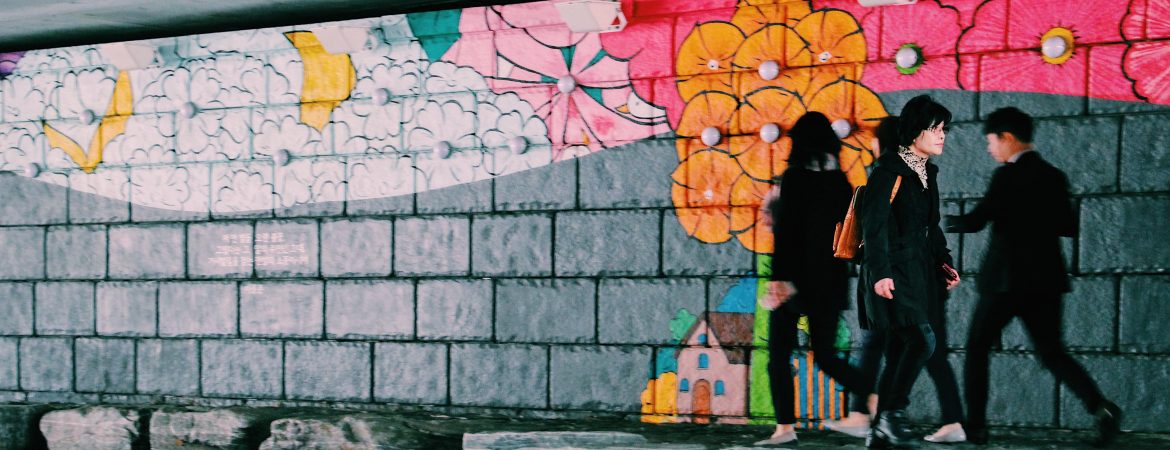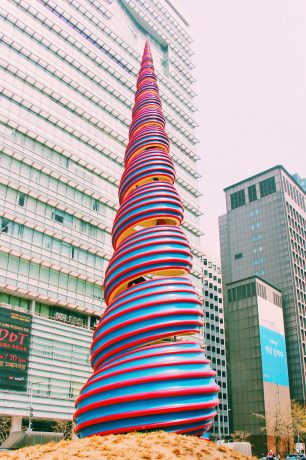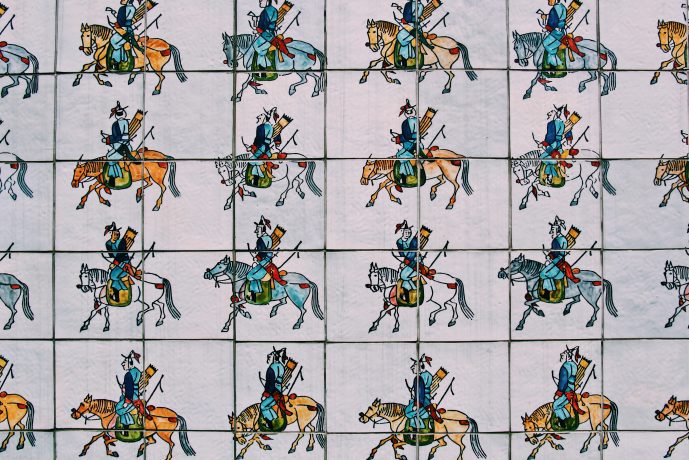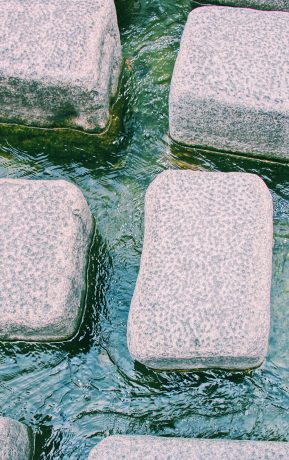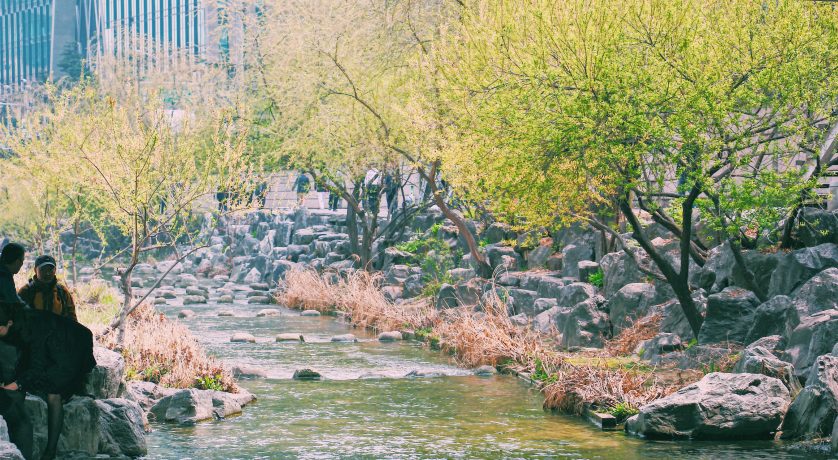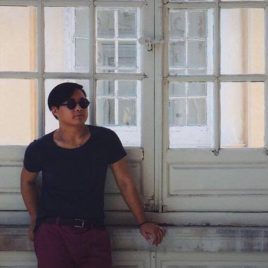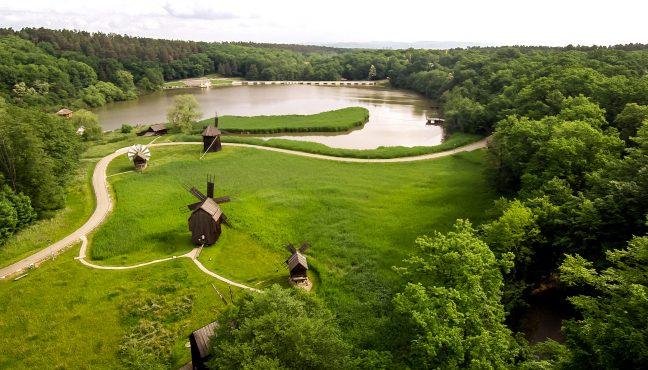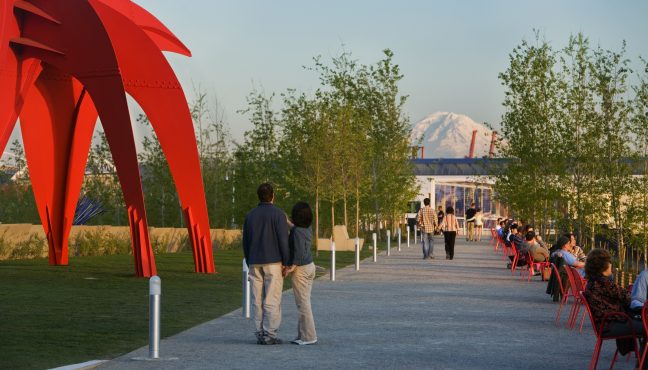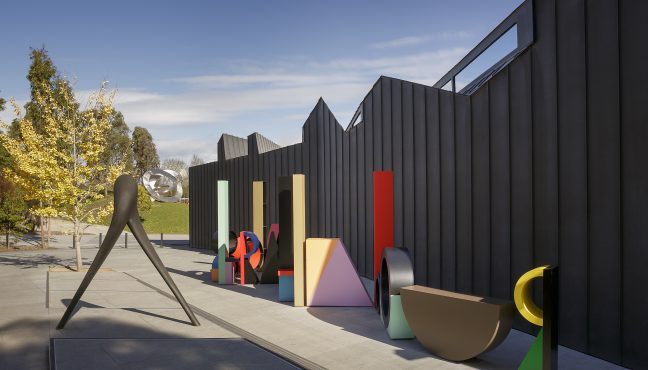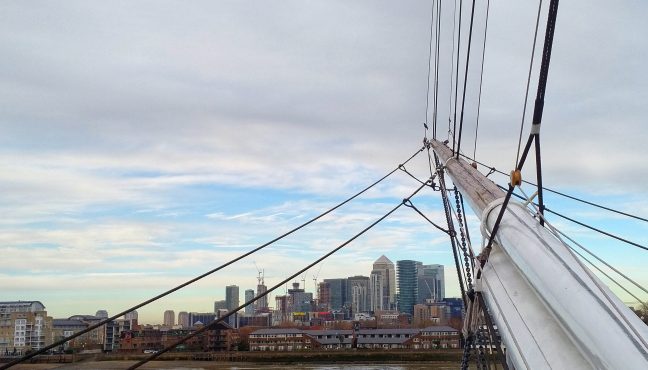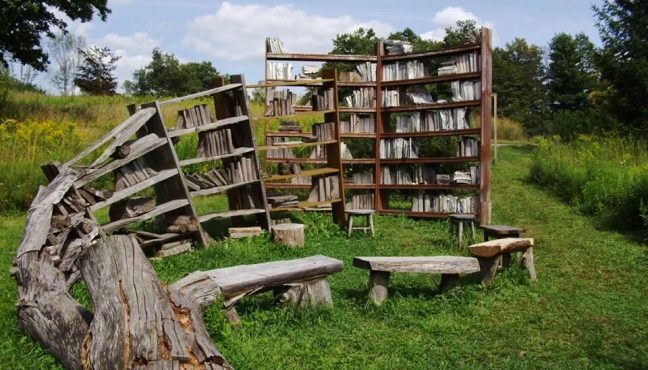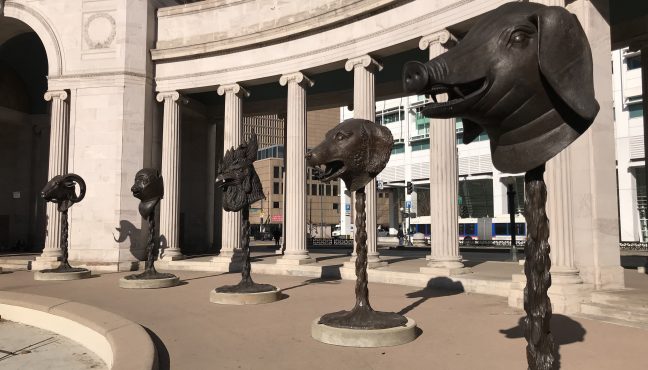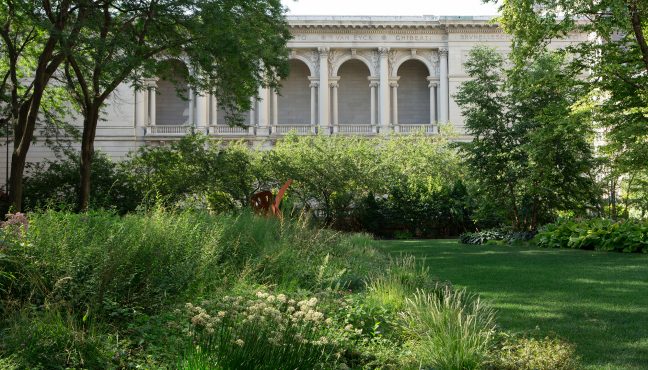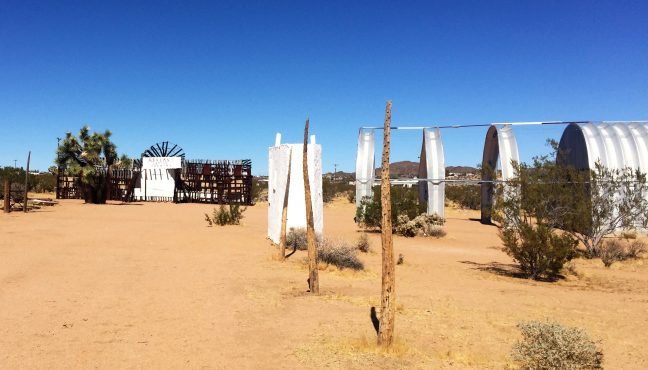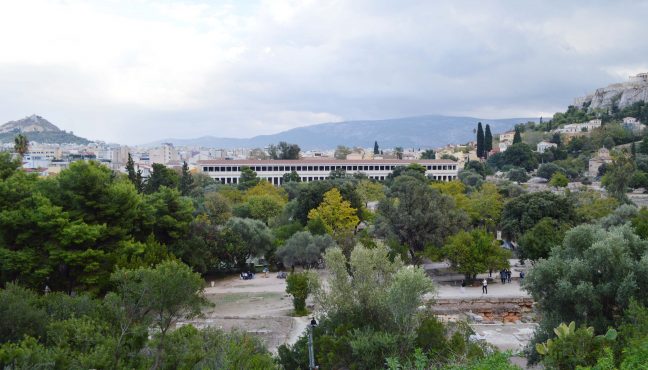With history as long as its length, the Cheonggye stream has existed for as long as Seoul has been a city; with bad management, the restoration processes was continuous throughout the Jeseon Dynasty (1392-1897). Workers would have to dread and bolster the banks of the stream and build bridges, maintaining and rebuilding such structures every 2-3 years. During World War II, the Japanese had attempted to dig up the stream but the poor domestic economic situation at the time continually stopped work and efforts to do so. After the Korean War, many with nowhere to go moved from the countryside to the city and often created makeshift homes along the stream. The accumulating trash from the squatters lead this to be a detested area of the city. Finally, in 1958, in the spirit of industrialization, the stream was covered up and elevated into a highway. Construction lasted 20 years and finished in 1976, thus symbolizing a modernist era in Korean culture, but bringing about a gray facade to Seoul’s landscape.
Finally, in 2003, Seoul took on an initiative to revitalize the city by reintroducing green spaces. The highway that was built was found to have faulty engineering, bringing shame onto the city. The years of neglect to the stream lead to much work that had to be done during restoration. The water had dwindled to such an extent that more had to be manually pumped through from the Han river and other groundwater systems from the nearby subway stations. The new plans encouraged the construction of pedestrian friendly roads connecting the steam with traditional sites such as Bukchon, Daehangno, Jungdone, Namchon, and Donhwamungil. The stream crosses the Gwangtongyo and Supyogyo bridges as well as pass adjacent to the famous DDP. The $900 million project initially attracted much public criticism but after opening in 2005, it became a popular destination among local residents, workers and tourist alike.


The giant ‘Spring’ Sculpture by Claes Oldenburg and his wife Coosje van Bruggen stands tall in Cheonggye Plaza, signaling the beginning of the streams trail. The sculpture itself has also come under scrutiny from local artists for not representing the local history as well as it could have. The sculpture represents new life for the once decrepit stream, the colorful ribbons that wound down the sides are inspired by the traditional dress of Korean women. The colors of blue and red represents the unity of opposing forces: nature and the human spirit. The shape captures the archetype of a shell, rising up like a pagoda. The plaza also includes a model of Cheonggyecheon, providing visitors with a bird's-eye view of the Stream along with plaques that comment on the 22 bridges that are spread across the stream. Some of the bridges, like the art along the stream, are restored sites from the past while others are take on a modern twist.


Because the sculpture is so large, it is easy to feel dwarfed in its shadow. The stream itself provides a striking contrast from the spaces around it; the lower levels of the river provide a secluded escape from the towering skyscrapers of downtown. It is easy to see why so many white collar workers make the journey on their lunches to relax with coffee and have mini picnics in the area. The abundance of flowers and trees provide shade and a refreshing breath of air to the gray modern landscape. In the sterile streets of the the business centers in Seoul, there are very little spaces for people to relax and loiter. The stream is an oasis for the locals, away from the hustle and bustle of daily life. Seoul is a big city but there are little green spaces compared to other cities, it's easy to see why the Cheonggyecheon was an instant attraction.
When visitors move past the statue, down the steps and onto the path adjacent to the stream, they are met by the Candle Fountain. Cascading water flows from a fountain and forms the stream; the path takes on an abstract shape as the pavement stretches for the streams center. The fountain features a magnificent synchronicity with lighting fixtures along with two accompanying Palseokdam wishing wells made of 8 different stones from each of Korea's 8 provinces. Stone steps are placed to allow visitors to cross from one side of the bank to the other. The paved walkways also act as elevated steps for people to dip their feet into the stream during hot summer days.


The three themes: ‘The Seoul City Wall”, “The ancestors who shaped the 600-year History of the Joseon Dynasty’ and “ The daily lives of the people”, that surrounded the project becomes much more evident as the journey down the river continues. Art spaces under bridges and murals of art accompany visitors strolling down the stream. The themes speak to the local area and Seoul’s historical and cultural heritage, bringing a convergence of old and new. Art along the river can be categorized into two areas: historical modernity and historical traditions.
All the art depicted along the Cheonggye stream draws from its history-rich past. Many of the pieces take inspiration from the more modern era from before the revitalization. A few highway pillars still stand in the middle of the stream to help remind visitors of the area’s gray past as an elevated highway in the industrial era. Stone laundry washing boards pop up along the river bank representing the people that used to wash their clothes in the river in the post Korean War era. Pieces like the Wall of Cultures, a series of paintings including the Song of Seoul by Chun Gapbae and the wishing wall reflect upon the impressions of the people today as they look back on the history of the stream.


More traditional pieces with modern interpretations are also present along the stream. Traditional wedding, a sculpture that mimics the classic Korean wedding ceremony, Secret Dates under the moonlight, a scene depicting the secretive nature or couples during the Joseon era, are both beautiful pieces that reflect the romanticism of traditional life in Korea. Other pieces such as the Globin Design, a wall of Goblin masks, looks more at symbolism in Korean life as it is a classic creature in Korean culture that brings with it both harm and riches.
Providing both a natural escape from work as well as a space for the more culturally interested, the Cheonggyecheon is a place of harmony. Through its long history, the stream has come to represent a mixture of modern and traditional Korean culture that is unlike any other space. So the next time you might be in Seoul, take a breather and stroll down the Cheonggyecheon, I promise you won't regret it.
